Heritage Lagos
Since time immemorial, Lagos is a city rich in history and natural beauty, preserved in that developed in large pedestrian areas, parks and little nooks, full of color and life that captures the interest to his discovery.
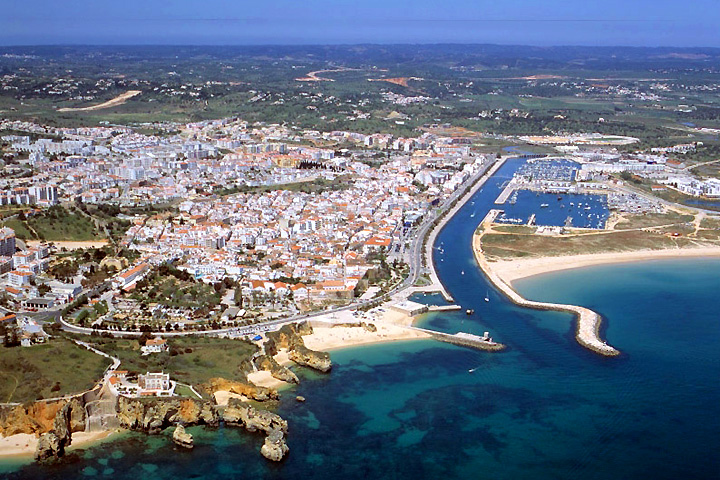
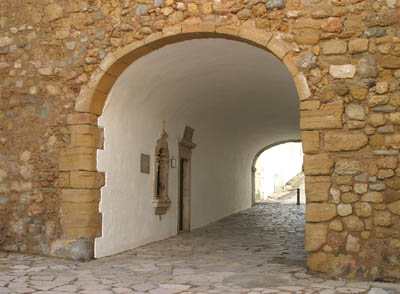
Bow of São Gonçalo – built in the 40 to immortalize the memory of the Patron Saint of Lagos, born 1360, and according to tradition, a house beside the Portas do Mar, the place where is your niche and image. In his youth, will study to Lisbon, where decides to enter the Order of St. Augustine Hermits, studying theology and so he dedicated himself to preaching and catechesis, being interested always the welfare of the population and supporting the poor. Thus, he won saintly reputation, the good and the miracles he performed, either in life or after death. São Gonçalo de Lagos died in Torres Vedras, 15 October 1422. And in 1778 Pope Pius VI authorized the cult of “Blessed” or Beato Frei Gonçalo de Lagos, with Holy honors in Portugal. The Lakes region celebrates on the 27th of October the municipal holiday in honor of this illustrious son and his patron.
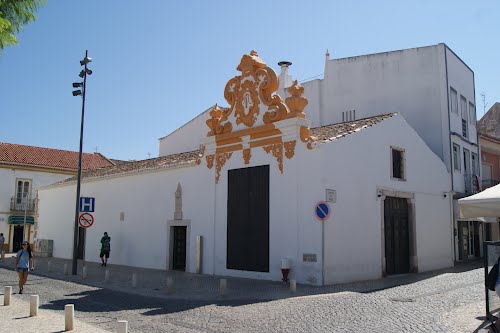
Regimental warehouse – remote to 1665, it was designed to store the products brought by ships that docked in Lagos, lying in Praça do Infante and boasts on its main facade a shield of the Kingdom of Algarve weapons, among them the seal of the Count of Avintes . The two large wooden doors, surmounted by a Baroque pediment, keep the last copy of a set of Seven Steps (oratorios) of the Cross that were scattered throughout the city. It is believed that this site will have been the Church of São Brás.
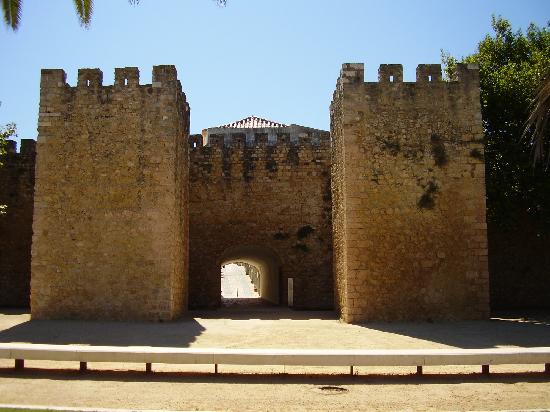
Castle of Governors – military architecture of the fourteenth to seventeenth centuries, this is a place that is believed to have been an Islamic citadel. However, the existence of Lagos Castle is only confirmed from the fourteenth century. The early fortress was added a bastion of About New Renaissance, which shock absorber 1581, all the medieval section was transformed into a residence of the Algarve Governors, which became more fortified and adapted as the designs of Alessandro Massay in 1617 is the oldest illustration of this fortified structure. In 1850 the land and the remains of the building complex, partly ruined by the 1755 earthquake, were transferred to the Mercy of Lagos, which, from 1885, has adapted the hospital.
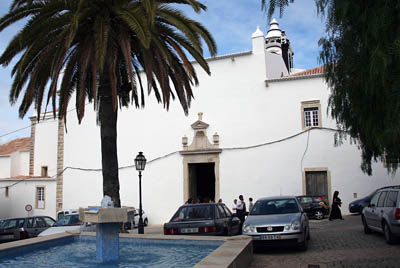
Church of Nossa Senhora do Carmo – this was built for a community of Carmelite nuns, the monastery was built by Christopher Dias priest in the mid-sixteenth century, the place where previously existed the Chapel of Our Lady. As archaeological studies, traces of the ancient hermitage were found showing the construction coming from the XIII century and was excavated in the rock. Thus, for over 800 years, this place was already a place of worship. The former Convent of Our Lady of Mount Carmel with a Mannerist and Baroque trait, is one of the buildings that testify to the permanence of religious houses in the city. Its sacristy features a tile paneling of the seventeenth century.

Luz fortress – or fortress of Nossa Senhora da Luz, is one of the best examples of existing seventeenth-century military architecture in the Algarve, having been built on previous fortified structure, which is unknown the date of construction. This is a model applied to many other fortifications that bear witness to the concern of the authorities to defend the territory coast of privateers and pirates, armed Islamic, and the Spanish neighborhood, unfriendly.
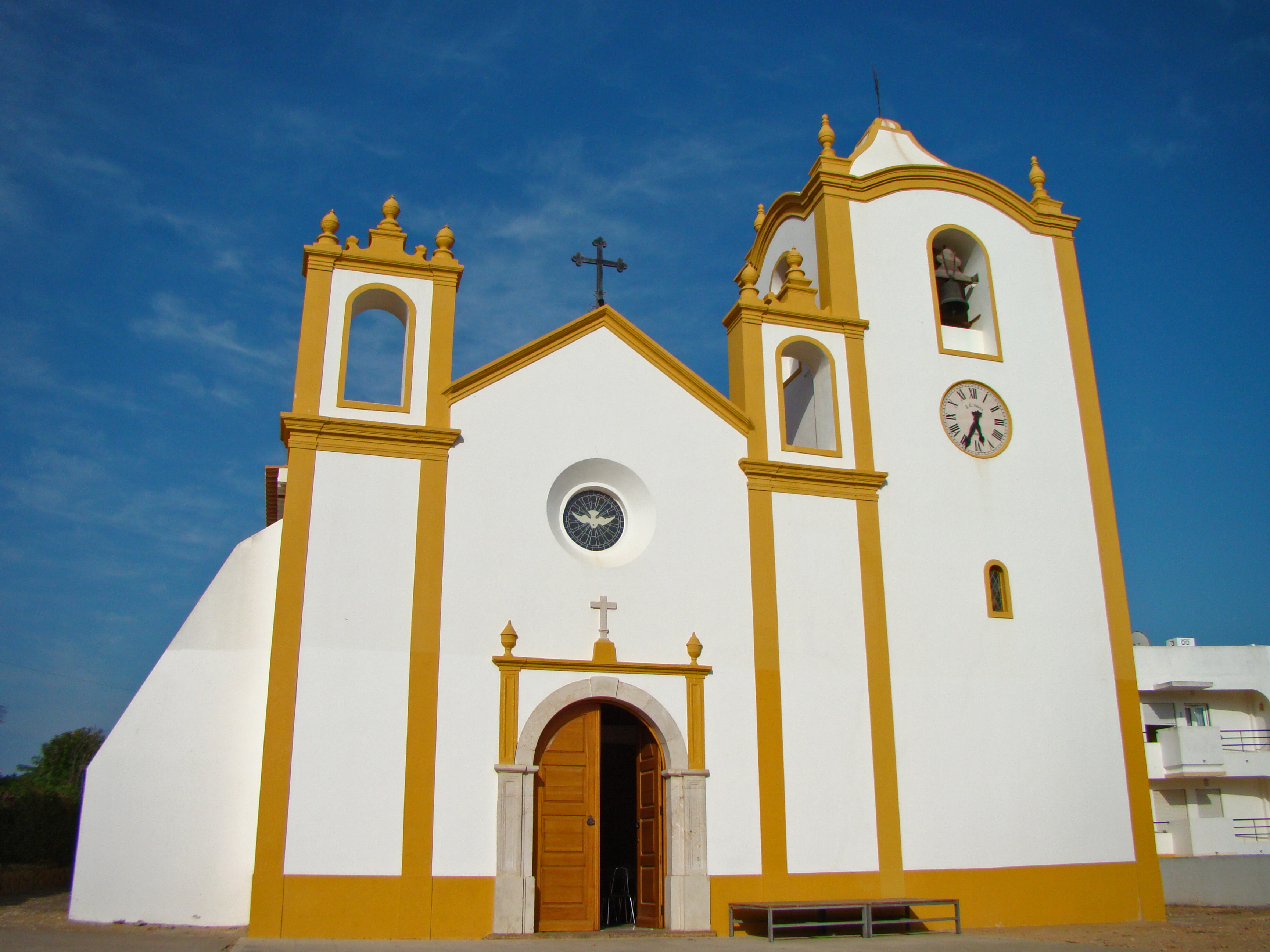
Church of Nossa Senhora da Luz – the architectural features of late Gothic, Manueline and Baroque, do not know its origin, but there is news of an inscription referring to the year 1521. This church has a unique font in the region, with seven corners symbolizing the seven sacraments. Its wide chancel of three sections covered by vault starry equipped with central chain, and three bocetes decorated with medallions, is the oldest part.
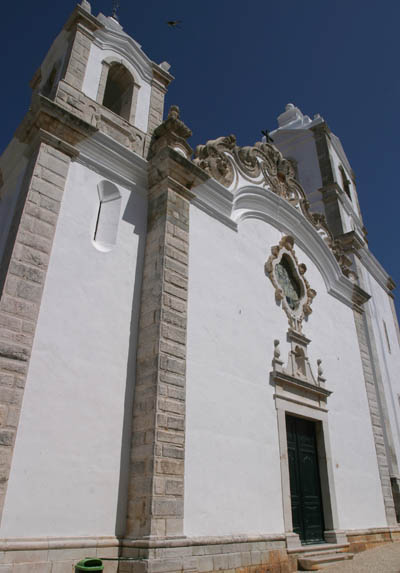
Church of Santo António – was built in 1707, it was rebuilt after the earthquake destroyed most of the building and its gilded. This is a construction of Baroque, wherein the outer simplicity contrasts with decorative interior wealth. The decor in gilt is considered one of the most beautiful in the country. The work of the altarpiece, who survived the earthquake, was commissioned in 1718 by woodcarver Gaspar Martins. The remaining work of carving is attributed to the carver Custódio Mesquita. In your floor’s a gravestone Hugo Beaty, Lagos Infantry Regiment commander and responsible for the church’s rebuilding in 1769.
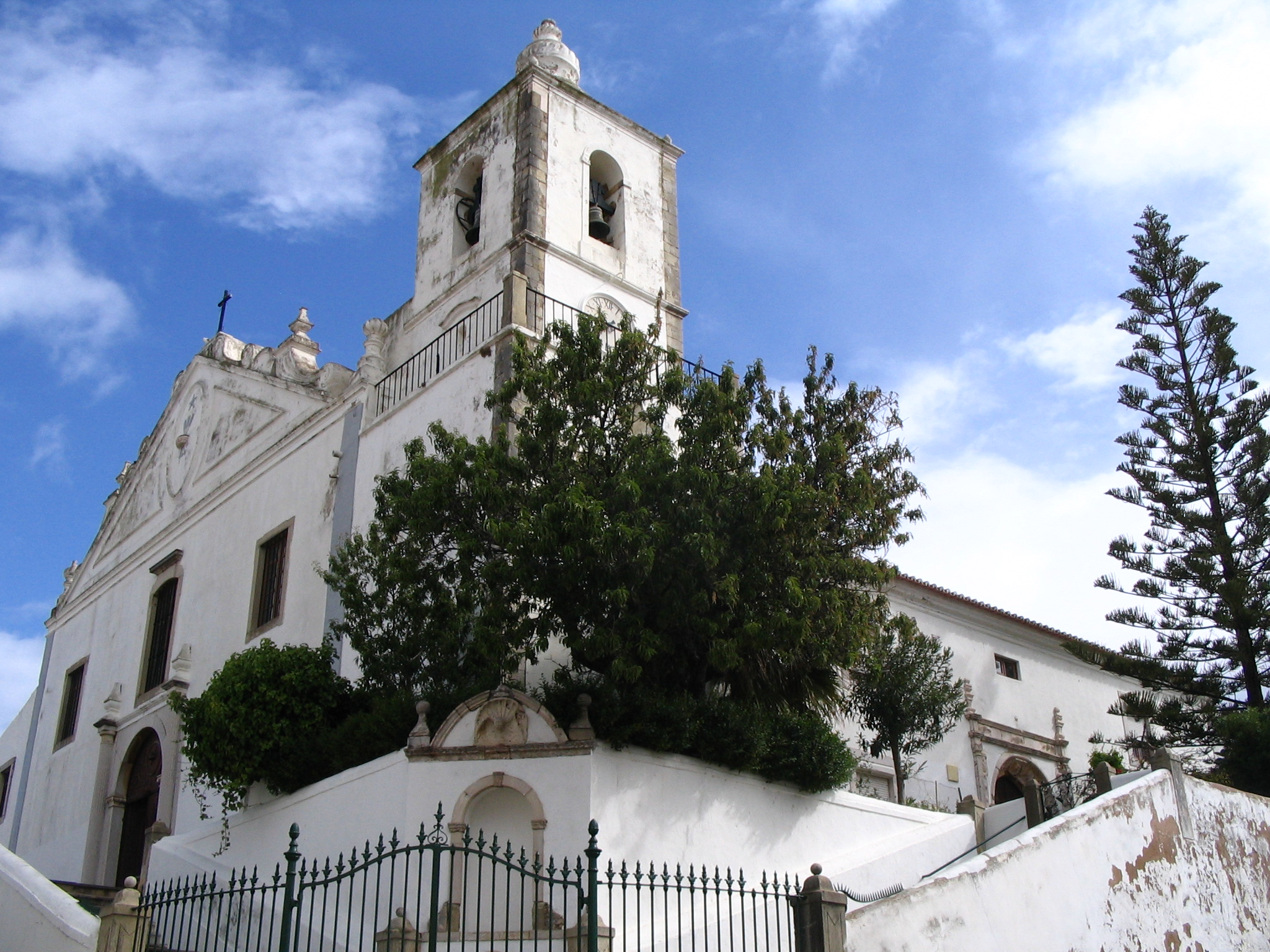
Church of São Sebastião – a religious building with a large visual impact throughout the city, lying in the previous chapel of N. Sra. da Conceição, which was built in 1325 and in the fifteenth century was already Parish Headquarters. In the year 1463, this chapel was transformed into a church dedicated to St. Sebastian. However, the 1755 earthquake caused extensive damage and was subsequently rebuilt, with a late Gothic porch and a side door of Renaissance style that was the main entrance of the previous hermitage. The interior consists of three naves separated by Doric columns, side chapels and altar in gilt. Attached is the small Chapel of Bones.
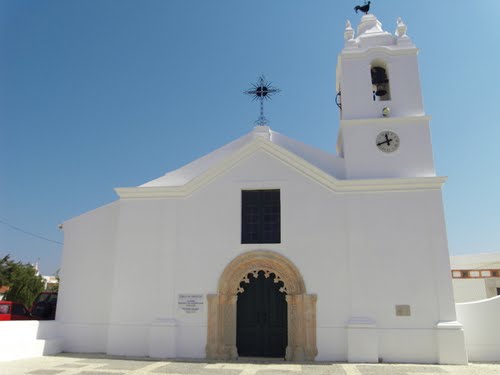
Mother Church of Odiáxere – a religious, Manueline and Baroque architecture, this presents a longitudinal plan, with a rectangular body with a single nave and quadrangular head. In its top wall sports a full triumphal arch flanked by two altars. The chancel is covered with wooden ceiling with a barrel vault profile, having a altarpiece in gilt, with Solomonic columns. Already the main portal manufactory has an arched soffit profusely decorated by interwoven motifs with elegant Cairel occupying the entire rainbow flag.
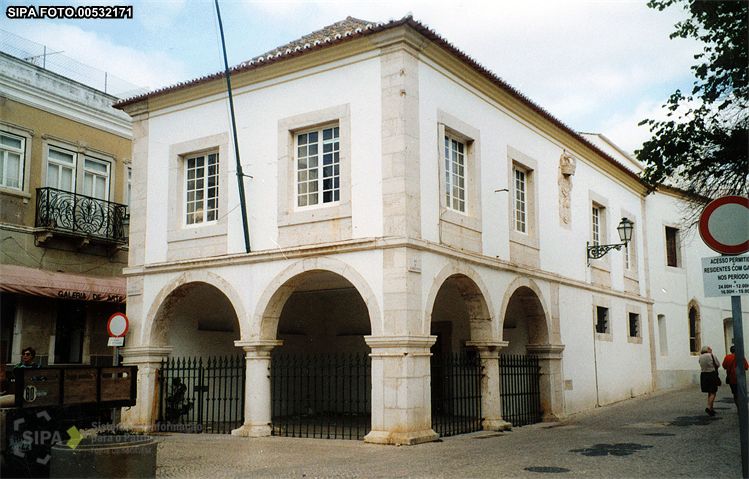
Market Slaves – Lagos was one of the possible locations of the first slave market in Europe Quattrocento. In the year 1444 come to Lagos the first slaves brought from Africa, starting its marketing, Rossio of the Trinity to the village gate, this slave market assumes special significance for its symbolic character, rooted in popular tradition. Your 1st floor was used as Vedoria House and Customs House Guard and Military Prison. Already, the ground floor is now occupied with the Museum Centre of the Slave Market, located in this space following the Cooperation Protocol signed in June 2010 between the City of Lakes and the Portuguese Army, which allowed the reciprocal transfer of real estate in the historic center of the city. The building facade are engraved the Nisa Marquis de Armas. It is open Monday to Saturday from 10am to 18pm and closed every Sunday and on the following dates January 1, Easter Sunday, April 25, May 1, December 1, 24 and 25 December.
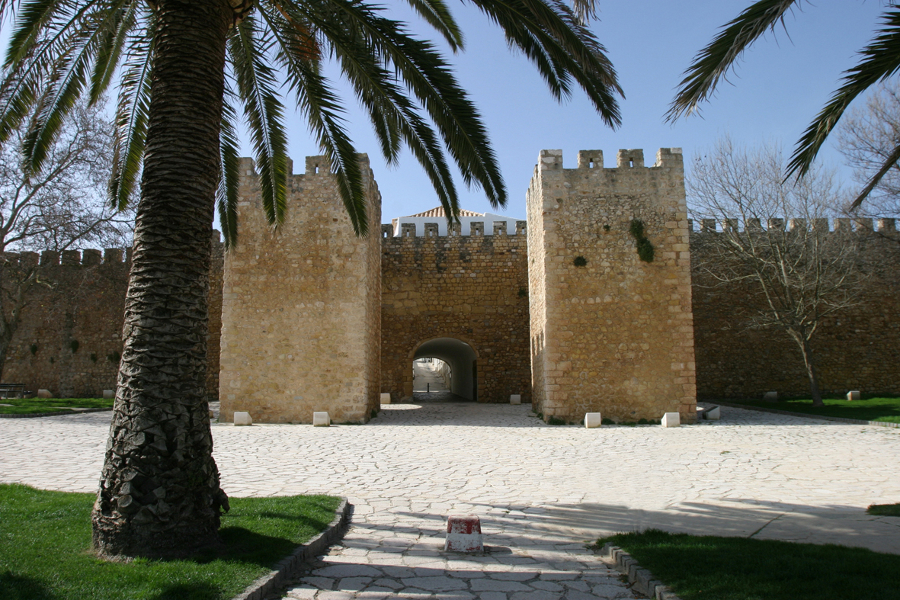
Walls of the Old Fence – It was completed in the fourteenth century and covered an orthogonal urbanism town with a “right street” and respective lanes, corresponding to the original core of the city of Lagos known as Viladentro. Its Renaissance wall, known as Cerca Nova, with plan that was outlined in the first half of the sixteenth century, it has incorporated in its perimeter one bastion the two parishes of the city, Santa Maria and San Sebastian. A work driven during the reign of King John III and completed in the first half of the seventeenth century.
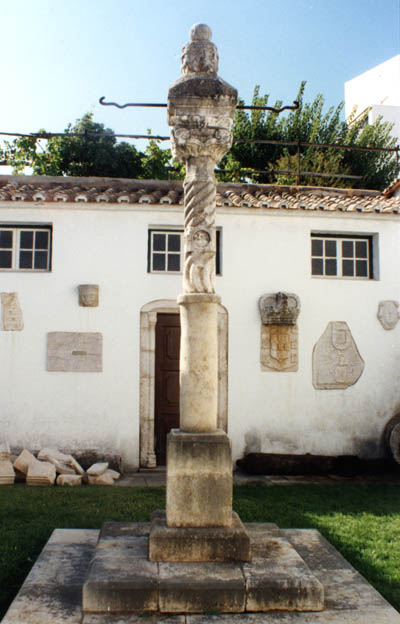
Lagos pillory – currently it is in an inner courtyard of the Municipal Museum of Lagos. It consists of three overlapping bases in step, it is in the plinth supporting a smooth column that receives another spiral, interrupted halfway through by a quadrangular element, surmounted by a capital decorated with acanthus. And over the Abacus rests a semi-sphere, trimmed on all four sides, with crimped hardware that supports an armillary sphere of irregular profile. This pillory was fitted with new stones that did not belong to its original construction.
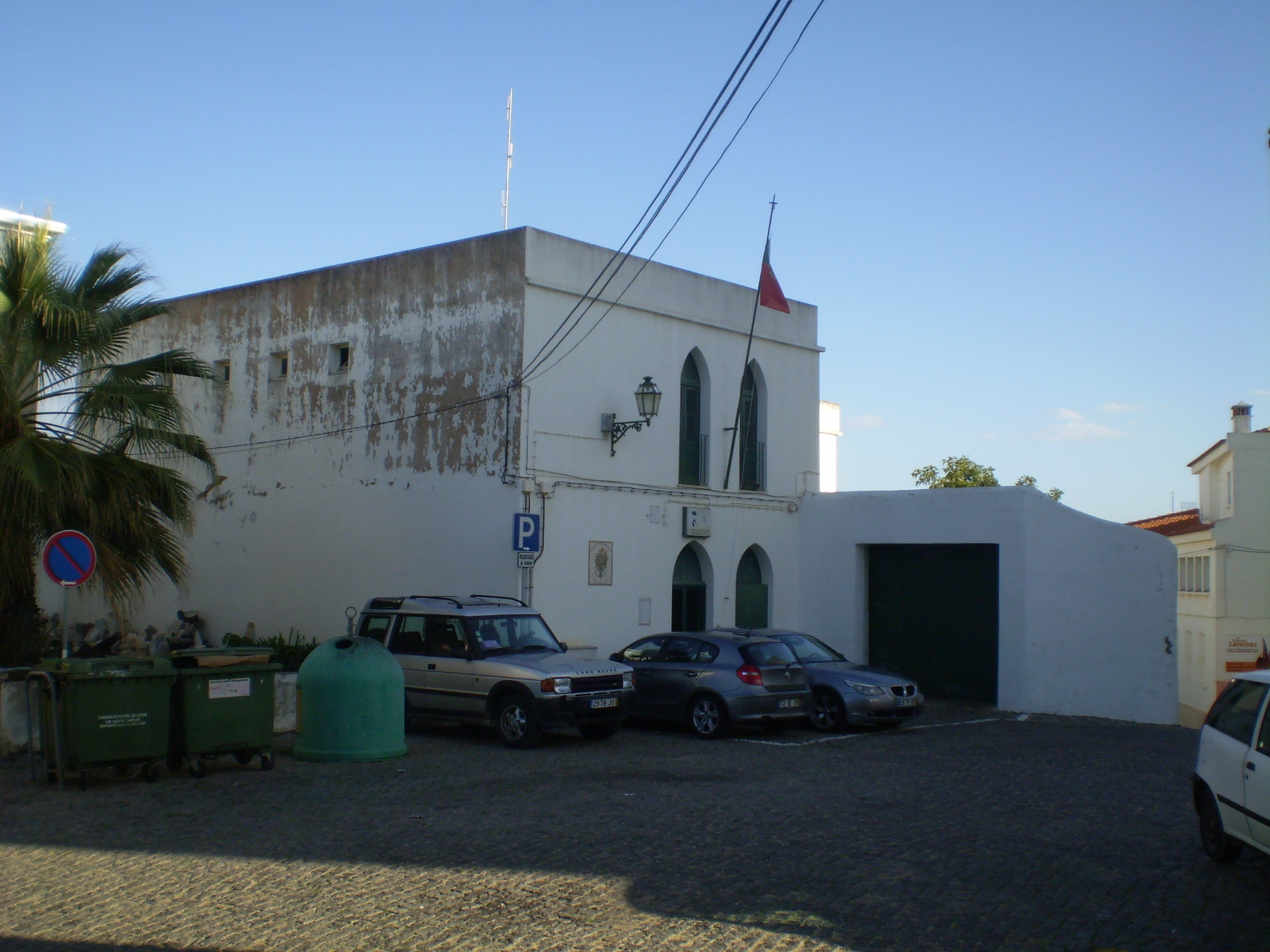
Convent of Nossa Senhora do Loreto – Also known as the Convent of San Francisco or the Capuchin Convent or Monastery of Our Lady of Glory, which gives several bodies from different eras. Originally built in 1518, at the foot of the hill, at the behest of D. Fernando Coutinho, Bishop of the Algarve, this convent arose under the invocation of Our Lady of Loreto. In the year 1560, it was founded a new building, up slightly on the slope due to unsanitary and threats ruins of the original building. Between 1910 and 1911, this group received a barracks of the National Guard and in the area of the church was built a chain, being disabled later and currently runs the Creative Activities Laboratory.
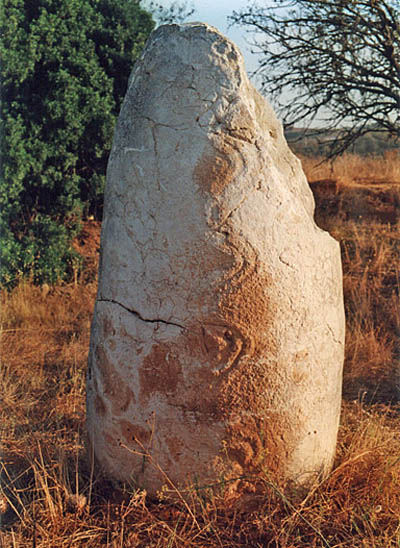
Menhir of Cabeça do Rochedo – fond a cylindrical monolithic moment with phallic configuration large, containing a large tear at the level of the center and diagonally are chipped at the upper end. This is a rural, hillside, surrounded by farmland and a quarry.
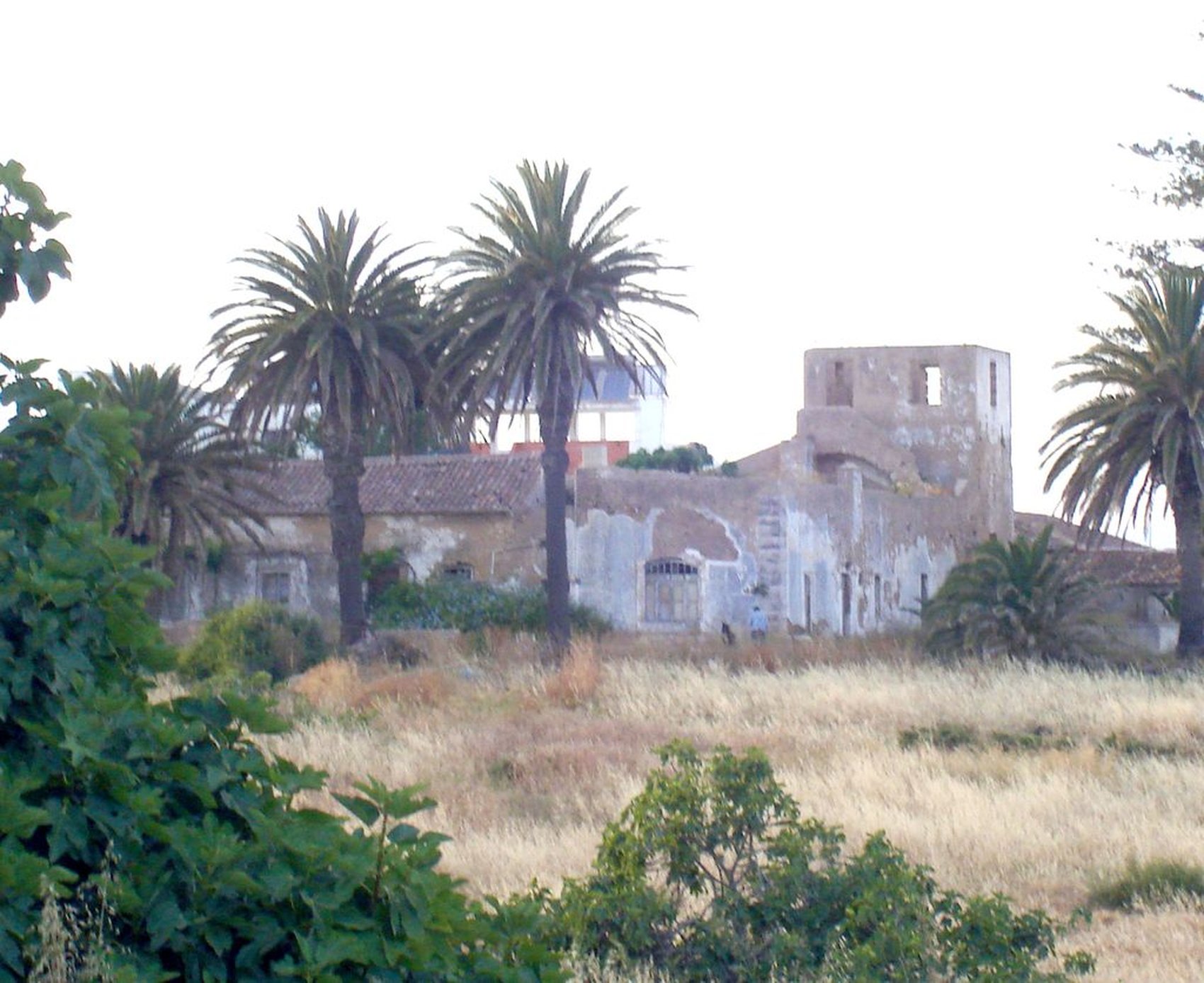
Ruins of the old Convent of the Trinity – a popular architecture, quadrangular with church adjoining the left, which left structural walls. This monastery was built between 1599 and 1606 with its main facade oriented to the west, with three access doors to all. This has a cloister with a well in the center and small wall forming undulating banks. It lies along the cliffs in arable field with later time house adjoining the north side, with an urbanization in the south, this is the sea and the valley to the north is the town of Lagos.

Roman ruins of Luz – on the promenade of the village of Luz, these ruins were discovered in the late century. XIX, for Estacio da Veiga archaeologist, and indicate the buildings that have existed, including a Roman bathhouse with several outbuildings and mosaic floors and an industrial complex consisting of tanks of fish salting. Among amphorae fragments, building materials, marble friezes, coins, among others, these are part of the Roman heritage assets that the construction dates back to centuries II or III, has undergone changes and expansion in the century end. III, IV early A.D.
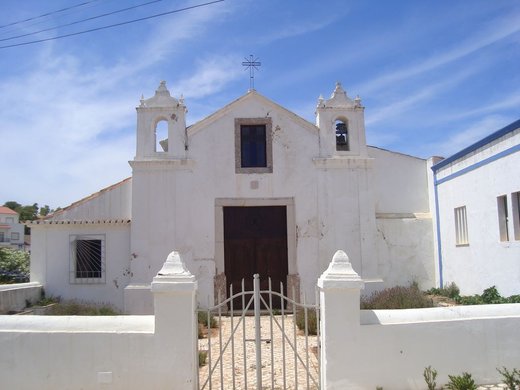
S. João Baptista Chapel – of medieval origin, and that in 1325, this was profoundly remodeled in the first half of the sixteenth century. The disarticulation between the nave and the chancel shows that this may have been a primitive marabout. It is a historically important place, given the reference to a primitive temple of 1174. However, with the 1755 earthquake, much of the building was dragged through the water, leaving only the chancel. Its reconstruction began in the early nineteenth century, being modest and essentially utilitarian, having alteado the walls of the nave and built the sacristy, in the twentieth century were adapted to private homes, integrating washing tanks and the house of the aqueduct.
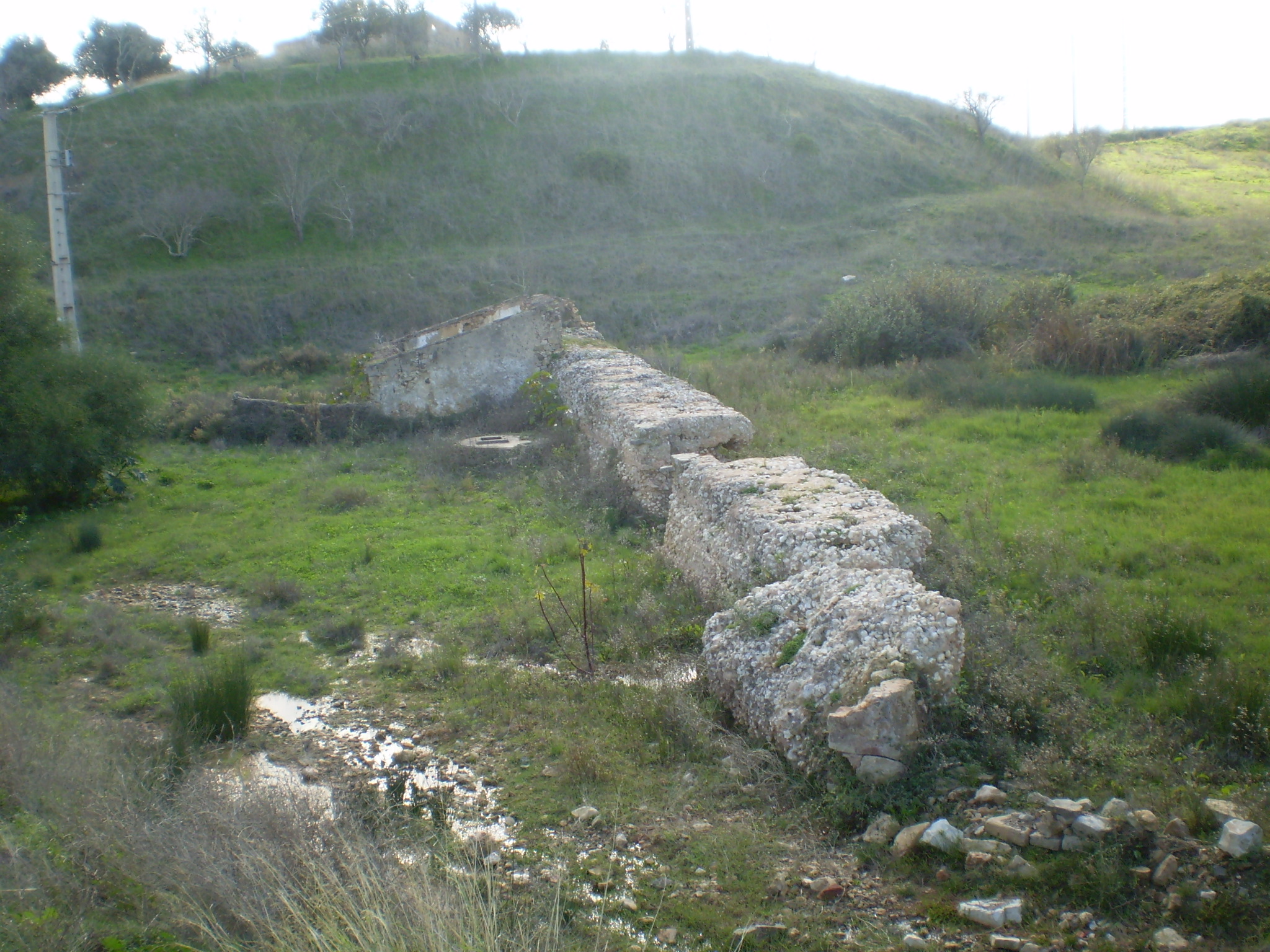
Dam of Fonte Coberta – one plant rectilinear wall, rectangular section with a construction which have been processed in successive stages, since it is constituted by mortar blocks placed in layers. This irrigation structure, construction attributed to Roman occupation period, is located in the path of an ancient river, the site of Fonte Coberta.
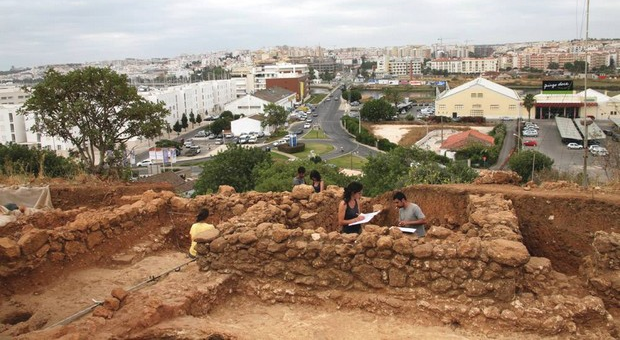
Archaeological Site Molião – this fortified town is located on a prominent hill, dominating the estuary of Bensafrim Ribeira. Its excavated structures in Molião Monte are testimony of its occupation from the 2nd Iron Age, between the end of the fourth century. C. the end of the century. III. C., until the imperial Roman times. The occupation has often been identified with Lacobriga, an important town mentioned by geographers of antiquity, whose siege is an episode of Sertório Wars. This site seems to have been phased out in favor of another town, located on the opposite bank of the river, the site of the present city of Lagos, that the old town is named.
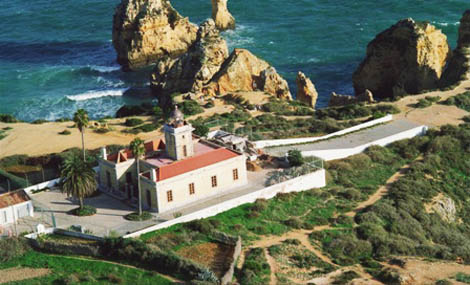
Ponta da Piedade Lighthouse – It came into operation on July 1, 1913, consisting of tower of square section, in masonry, with ashlar corners, with the east and west sides of attachments one floor, which were the dwellings of the lighthouse keepers. Inside it has a metal spiral staircase access to the flashlight. The tower was 9 meters high and the illuminating device was 4th order, rotation, showing groups of five white flashes every ten seconds. For light source had initially an oil the lamp. The May 1952, this would be electrified, getting a luminous range of 15 miles, later extended to 18 miles. In 1956 it was purchased new electrical glowing device with automatic passage to acetylene gas. Nowadays works exclusively electricity being automated with the luminous characteristic of simple lightning white and period of 7 seconds, has a luminous range of 20 miles.
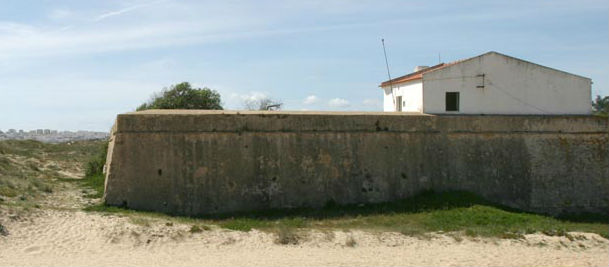
Meia Praia fort – also designated by Fort St. Roque, despite its true patron is St. Joseph, this strong mannerist architecture obeys the new features of the artillery. With a quadrangular with lit ramp to the terrace, it is integrated into the network of coastal forts built to the west and the east of the city of Lagos to contain the constant harassment of the coast by pirates and privateers. Is currently located in the beach of Meia Praia, which was formerly the mouth of a small stream, having long been silted, is currently in a central area of the Bay of Lagos, and its construction dates back to the second half of the seventeenth century, revealing a complementary role in relation to the strong military presence in the city of Lagos.

Church of Santa Maria – built in 1498 on the church name of Mercy, which was addorsed the hospital house of Mercy. In the sixteenth and seventeenth centuries has undergone restoration and enlargements ending up being instituted parish church dedicated to Santa Maria, after the destruction caused by the earthquake of 1755. This neoclassical architecture building consists of a single nave with three side chapels and sacristy adjoining the side facade left. With the front facing the Praça do Infante, has a symmetrical composition, with the overlapping core elements, the front door, the bay window and a niche for image. Symmetry is reinforced by two lateral towers with steeples. The interior is enriched with retabulística the second half of the 18th century.
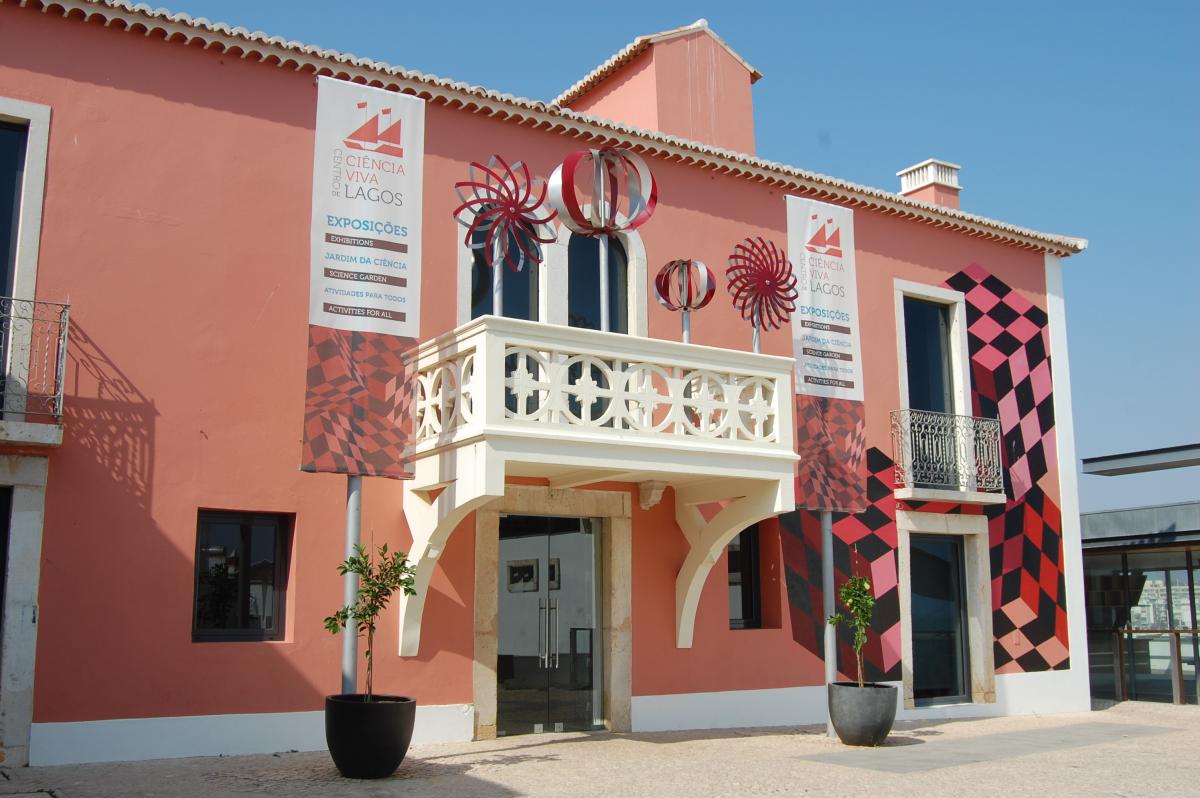
Living Science Center of Lagos – a playful and instructive space under the theme of the Portuguese Discoveries providing information about the trip that took us to meet the world through a discovery in the trial is a way to go for each. Is set in an old manor eighteenth century, traces of Pombal, overlooking the waterfront of the city. The balance of the facade, the garden, the outdoor patios and panoramic views bring this discovery space aesthetic and contemplative dimension. The Centre also offers a multipurpose space, equipped with computers with internet connection and free access to all visitors, and a garden with a small outdoor auditorium. The program includes lectures to disseminate and discuss ideas, astronomical observations or experimental workshops, planned according to the age level of the participants. Open from 10:00 to 18:00, Tuesday to Sunday, the last admission at 17:00.
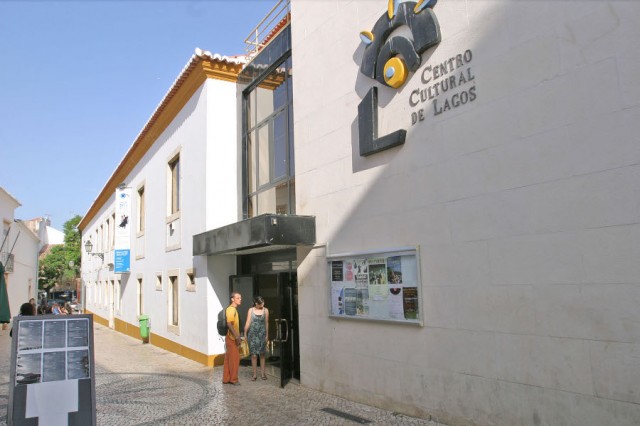
Cultural Center – a building of the eighteenth century, which was installed Recreational Lacobrigense Philharmonic Society, known for the Rich Society. The current building was opened in October 1992, equipped with three temporary exhibition halls and two entertainment areas, the Cultural Center also has an auditorium with capacity for about 300 people, for medium-sized shows, an outdoor patio and a cafeteria. It is a constant place of passage of various forms of artistic expression, the visual arts to music, through the theater and the ballet, not forgetting the conferences, seminars and conference. In the exhibition area that has a diverse programming that are themes related to architecture, archeology, history and a major component of dissemination of national contemporary art activities, but with some pivotal events of an international nature, carried out in collaboration with institutions such as the Serralves Foundation and Calouste Gulbenkian Foundation.
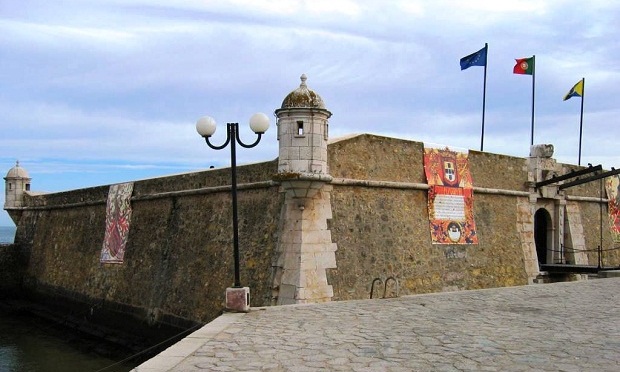
Ponta da Bandeira Fort – also known as Fort of Our Lady of Penha de France, Forte Pau da Bandeira or Fort Registry, this was built between 1680 and 1690, defended access to the pier and the southeast and east sides of the city wall, crossing fire with the bulwark of the Village Gate and the bulwark of the Castle of Governors. Designed at the time, as one of the most technically advanced strongholds in the Algarve, the quadrangular, relatively low volumes and very thick walls in sections facing the sea, reveal a military architecture devised to seize the artillery war. The moat surrounding the fort is overtaken by a drawbridge. The cylindrical watchtowers were introduced by the restoration campaigns made around 1960. Inside is conserved a small seventeenth-century chapel lined with tiles. It is one of the finest and best preserved of the existing seventeenth century copies in the Algarve, being an ex-libris authentic maritime fortifications of the old War Square in Lagos. Currently it works inside a museum evocative pole of the Age of Discovery and temporary exhibition halls. On the roof is feature a sculpture exhibition of Lacobrigense artist, the late José Maria Pereira. It is open from Tuesday to Sunday from 10h00 – 12h30 / 14h00 – 17h30 and closed all Mondays and on the following dates: January 1, Easter Sunday, April 25, May 1, December 1, 24 and December 25th.
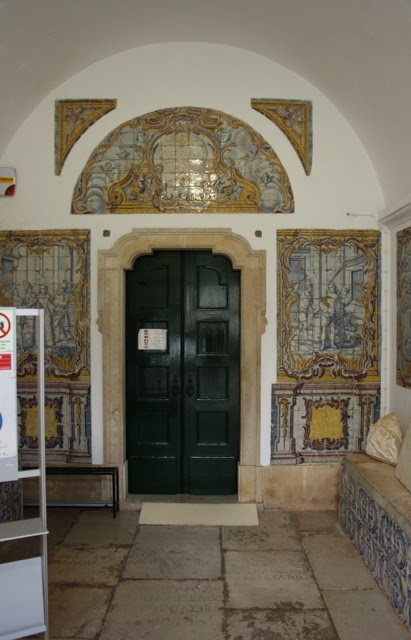
Municipal Museum Dr. José Formosinho – an annex building of St. Anthony’s Church, was founded in 1932 by initiative of its patron, Dr. José dos Santos Pimenta Formosinho. It was developed through a combination of efforts, with constant donations. The archaeological excavations carried out by its founder, by Abel Viana and Octávio da Veiga Ferreira proved to be extremely important for the enrichment of the collections. This is testimony of the pre- and proto-history, Roman, Arabic and Portuguese. At the entrance boasts a Renaissance portal, originating in the Commitment Sea Church, which was adapted an iron gate run by local artists. Its vast collection lies distributed by sections of Archaeology, Sacred Art, History of Lagos, Ethnography of the Algarve, Painting, Numismatics, Ethnography Mineralogy and Overseas. It has unique collections and unique museographic pieces in Portugal that, by itself, justify a visit. Open Tuesday to Sunday from 10h00 – 12h30 / 14h00 – 17h30, ending all Mondays and on the following dates: January 1, Easter Sunday, April 25, May 1, December 1, 24 and 25 December.



